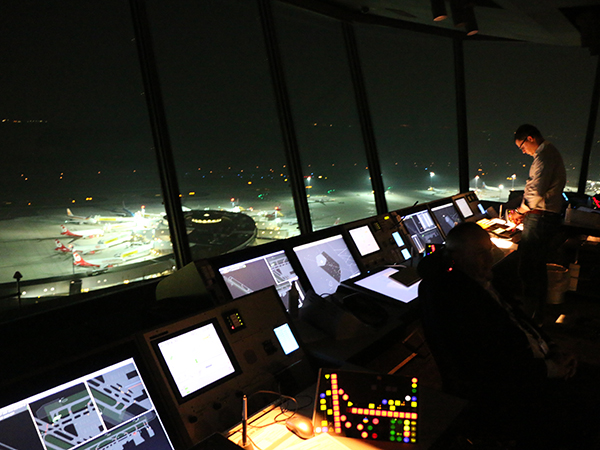Austro Control successfully takes new air traffic control system into service at Austria’s airports

After being implemented in the area control centre (ACC) in February 2013, use of the system has now successfully been extended to all Austrian airports.
All the information – such as radar and flight plan data – is now brought together in the Vienna centre for processing, and the results provide an exact representation of the current air traffic situation on the radar screens and special Tower systems of air traffic controllers at the various airports. The latter systems are tightly coupled with “TopSky” to provide actual, accurate and consistent real-time data across all operational units. Paper flightstrips are now a thing of the past at all the Approach units, all data is now provided directly on the screen.
Implementation of the new system and the integration with the tower systems at Vienna Airport and in Austria’s provinces marked a successful end to the second phase of a multiyear project. The system migration was carried out during the night, without interrupting operations. Vienna Airport has roughly 250,000 take-offs and landings a year, and Austro Control handles about 1.1 million flight movements per year in Austrian airspace.
The “TopSky“ system is one of the most advanced of its kind, and will bring significant improvements in air traffic management.
Notable technical features include:
• Stripless environment: Paper flight progress strips are a thing of the past, as all the information is shown on the air traffic controllers’ screens. Instructions are now recorded directly in the system.
• System coordination (SYSCO): Communication between air traffic controllers in charge of neighbouring sectors is automated. Information is passed on directly by the system, reducing the amount of inter-sector coordination required. This is a major improvement, particularly for take-offs and landings.
• Monitoring and Downlink Airborne Parameters (DAPs): The new system includes comprehensive monitoring functions: if an aircraft fails to maintain its course or altitude, air traffic controllers are automatically alerted. Important parameters selected by the pilots, such as altitude, speed and course are downloaded to the air traffic control system, and if these differ from ATC instructions this also results in a warning.
“Austro Control is now using one of the world’s most modern air traffic control systems for the terminal areas as well. This is an investment for the future, and ensures that in the years to come air traffic at our airports will continue to be safe, efficient and punctual. With the implementation of this system, Austro Control is making an important contribution to technical harmonisation of the Single European Sky,” explains Austro Control CEO Heinz Sommerbauer.
“Using TopSky for terminal areas as well means that the second phase of the system’s implementation has been successfully completed. Now our air traffic controllers at the airports as well as airlines and passengers also get the benefit of this ultra-modern system. The transition was painless, and all the systems worked as intended. Our people’s work has been outstanding,” says Austro Control COO Thomas Hoffmann.
Work on planning the new system began in 2005, implementation started in late 2008, with the installation of the first test system, and in 2013 it was taken into service for the upper airspace. Following the successful implementation at Austria’s airports, the main system is now complete. The total cost for the migration of the whole system (overflights and take-offs/landings) comes to about EUR 60 million.
International cooperation between ANS providers (ANSPs) – the COOPANS partnership
The system is a joint development by five ANSPs, based on Thales Air Systems’ TopSky technology. The ANSPs of Austria, Croatia, Denmark, Ireland and Sweden joined forces with the manufacturer in the Cooperation between ANS Providers (COOPANS), with the aim of achieving a major reduction in development costs as compared with the previous “island solutions”. Altogether, 70% of the world’s air traffic is now managed using “TopSky” solutions.
The key benefits of COOPANS are that the costs of system development and future upgrades are shared among the partners, and that a modular approach is far less risky than implementing a completely new individual solution. Austro Control has achieved savings of around 30% as compared with a stand-alone development.
The COOPANS project is helping to drive forward the harmonisation and standardisation of European air traffic management systems, in line with the goals of the Single European Sky (SES) project. Deployment of a standardised air traffic control system at seven control centres in five different countries is a first for Europe.
